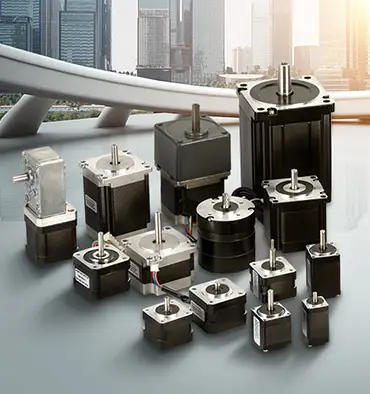How much weight can a stepper motor move?
The question of how much weight a stepper motor can move is an important one, as it can have a significant impact on the performance and reliability of the motor. In this article, we will provide a detailed explanation of how much weight a stepper motor can move, and why the amount of weight a stepper motor can move can vary depending on the type of stepper motor. We will also discuss the factors that can affect the weight-moving capacity of a stepper motor, and why it is important to consider these factors when selecting a stepper motor for a particular application.
What is a Stepper Motor?
A stepper motor is an electric motor that rotates in discrete steps, or increments, rather than continuously. This makes it ideal for applications where precise control of the motor's position is necessary, such as in printers, scanners, and other types of precision machinery.
Stepper motors are different from other types of motors in that they have a fixed number of steps per revolution. This means that the motor can only rotate in discrete steps, rather than continuously. For example, a stepper motor with 200 steps per revolution will rotate in 200 equal steps, each corresponding to a 1.8 degree increment of rotation.
How Much Weight Can a Stepper Motor Move?
Now that we have a basic understanding of how stepper motors work, we can answer the question of how much weight a stepper motor can move. The short answer is that the amount of weight a stepper motor can move can vary depending on the type of stepper motor, as well as other factors.
In general, the weight-moving capacity of a stepper motor is determined by its size and design, as well as the operating conditions under which it is used. Larger stepper motors are typically capable of moving more weight than smaller stepper motors, but the actual weight-moving capacity of a particular stepper motor will depend on the specific conditions under which it is being used.
For example, a small stepper motor might be able to move a few pounds of weight when operated at low speeds, but the same motor might be unable to move any weight at all if it is operated at high speeds or under heavy load conditions.
Factors that Affect the Weight-Moving Capacity of a Stepper Motor
There are several factors that can affect the weight-moving capacity of a stepper motor, including:
- The size and design of the motor: As mentioned above, larger stepper motors are typically able to move more weight than smaller stepper motors. This is because larger stepper motors have more mass and larger rotors, which give them more mechanical advantage and allow them to generate higher levels of torque.
- The operating mode of the motor: The operating mode of the motor can also affect its weight-moving capacity. For example, stepper motors that are operated in microstepping mode are able to divide each step into smaller increments, resulting in smoother and more precise movement. However, this also means that the motor's torque output is reduced, which can limit its weight-moving capacity.
- The motor's step angle: The step angle of a stepper motor refers to the angle that the motor's rotor turns with each step. Stepper motors with smaller step angles are able to move more weight, as they are able to generate higher levels of torque. However, motors with smaller step angles also require more steps to complete a full revolution, which can result in slower movement.
- The motor's power supply: The power supply that is used to drive the stepper motor can also affect its weight-moving capacity. If the power supply is not able to provide enough current to the motor, it may not be able to generate enough torque to move heavy loads. Additionally, if the power supply voltage is too low, the motor may not be able to reach its maximum speed or torque output.
- The load on the motor: The weight of the load that is being moved by the stepper motor is also an important factor to consider. If the load is too heavy, the motor may not be able to generate enough torque to move it. Additionally, if the load is unbalanced or unstable, it may cause the motor to stall or lose steps, which can result in inaccurate movement.
- The mechanical setup of the motor: The way in which the stepper motor is mechanically connected to the load can also affect its weight-moving capacity. If the motor is not securely mounted or if there is too much friction in the mechanical system, the motor may not be able to generate enough torque to move the load.
Conclusion
The weight-moving capacity of a stepper motor is influenced by several factors, including the size and design of the motor, the operating mode, the step angle, the power supply, the load, and the mechanical setup. By considering these factors and selecting a stepper motor that is appropriate for the application, it is possible to achieve accurate and reliable movement of heavy loads.


Leave a Reply